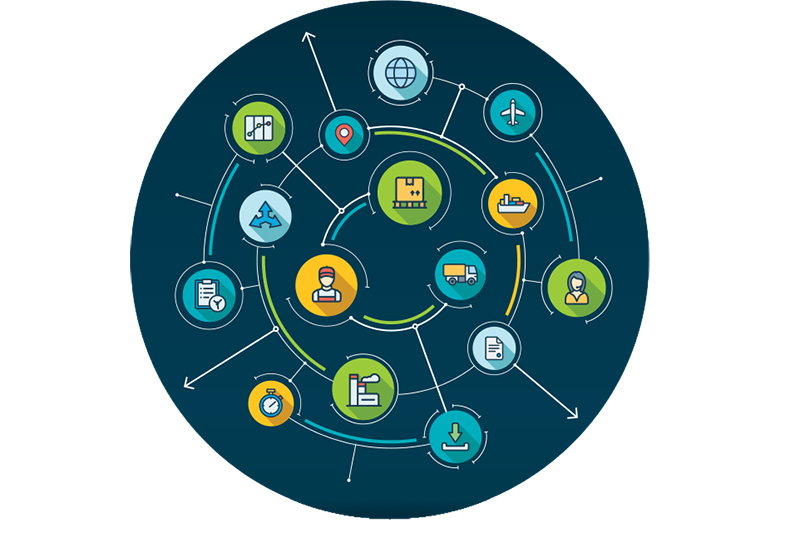What is a Transporation Management System (TMS) to you?
I realized then that the term “TMS” has gotten sticky. Between shippers, carriers, third parties and brokers, a quick investigation and some product reviews confirmed that there is confusion about what transportation management systems are and what they do.

I was recently facilitating a meeting between a shipper and carrier on a dedicated carriage contract. The carrier stated that they were investing in a TMS as a significant innovation to help better serve their clients. The shipper, thinking TMS was a tool for optimizing LTL loads, stated that a TMS was not really going to do much for their truckload business.
That feedback surprised the carrier because their TMS was intended to be an aid in scheduling loading, driver hours and backhaul arrangements. They were not thinking of entering the LTL business.
I realized then that the term “TMS” has gotten sticky. Between shippers, carriers, third parties and brokers, a quick investigation and some product reviews confirmed that there is confusion about what transportation management systems are and what they do. In this case above, both parties were correct, but talking about different applications.
Not long ago there were trucking management systems that supported dispatch, driver hours, equipment use and customer invoicing. On the shipper side were transportation management systems that used licensed optimization software to consolidate loads from LTL to multi-stop truckloads. Match-pay invoice audited was added to satisfy the CFO that they were getting something, too. Tendering and reverse auction functions were eventual add-ons.
Both of these server-based system types were expensive and required lengthy implementation and integration to one or another form of ERP and financial systems. Both have been developing rapidly to tender, dispatch, track, optimize and later pay invoices and/or payroll. Third parties gained multi-client capability and later Cloud hosting.
For prospective buyers of such systems, there is now a much shorter time to implement because systems are Cloud-based and use standard XML formatting to connect to other systems. A buyer would likely spend the largest chunk of their time prior to implementation when they first assess their needs. Savvy shippers take more time at the outset to discover, research and evaluate applications that will enhance productivity and reduce operational costs in specific areas.
Buyers need to be cautious when they hear about “double-digit freight cost reductions” and significant labor savings. In which business functions will these savings show up? And, do these improvement areas relate to your business? As in the case mentioned above, if you don’t ship much LTL freight, a load consolidation product may not be the place to spend your limited resources. You may do better to find an intermediary 3PL or broker with a lot of LTL and a TMS and negotiate to share in the added value your freight brings to the table. Focus your time and money on a tool or tools that will have an impact quickly on improving operations in a measurable way.
There are specialized applications that often get caught in the TMS name. These include yard management, fleet equipment and driver HOS compliance tools—all of which are a part of the transportation management function. Your operation, or that of your customer, may not need them.
When you hear, “we need a TMS” get ready to research and assess what that means for your business. Don’t spend big money on a multi-function application or a Cloud-based software service that does not fit your specific productivity initiatives. I would likely agree that, in fact, you do need a TMS. But the real question is: What is a TMS to you?

Article Topics
TMS News & Resources
First scheduling API through the Scheduling Standards Consortium is released by Uber Freight TD Cowen/AFS Freight Index points to a muted peak season and mixed activity across TL, LTL, and parcel markets Enterprise Resource Planning (ERP) continues to push further into Supply Chain Management (SCM) Gain Greater Visibility With ERP & TMS Integration Top Transportation Management System (TMS) Trends for 2023 Trimble acquires Transporean in major deal, for nearly $2 billion What you need to know for a better ROI More TMSLatest in Logistics
LM Podcast Series: Assessing the freight transportation and logistics markets with Tom Nightingale, AFS Logistics Investor expectations continue to influence supply chain decision-making The Next Big Steps in Supply Chain Digitalization Warehouse/DC Automation & Technology: Time to gain a competitive advantage The Ultimate WMS Checklist: Find the Perfect Fit Under-21 driver pilot program a bust with fleets as FMCSA seeks changes Diesel back over $4 a gallon; Mideast tensions, other worries cited More LogisticsSubscribe to Logistics Management Magazine

Find out what the world's most innovative companies are doing to improve productivity in their plants and distribution centers.
Start your FREE subscription today.
April 2023 Logistics Management

Latest Resources














